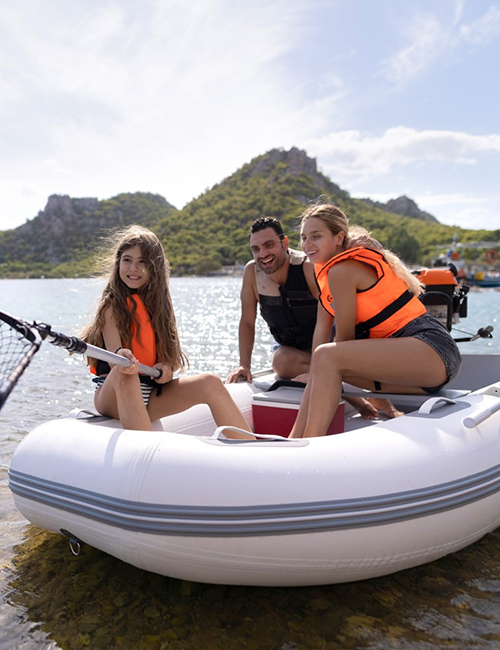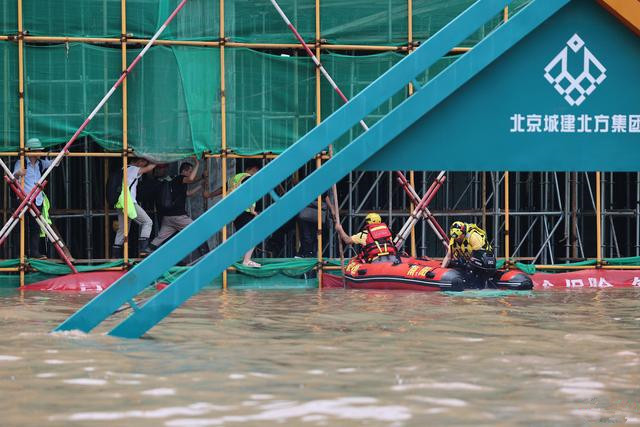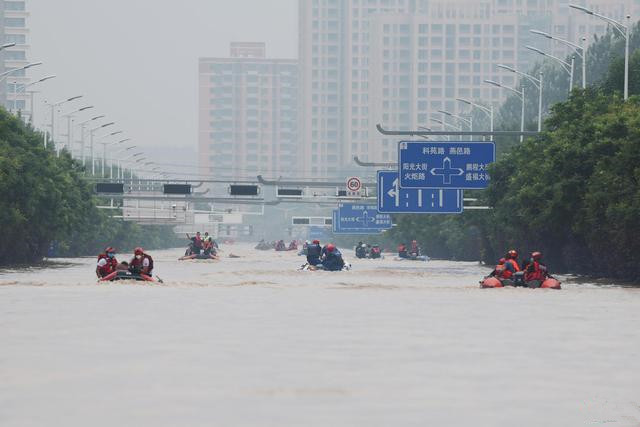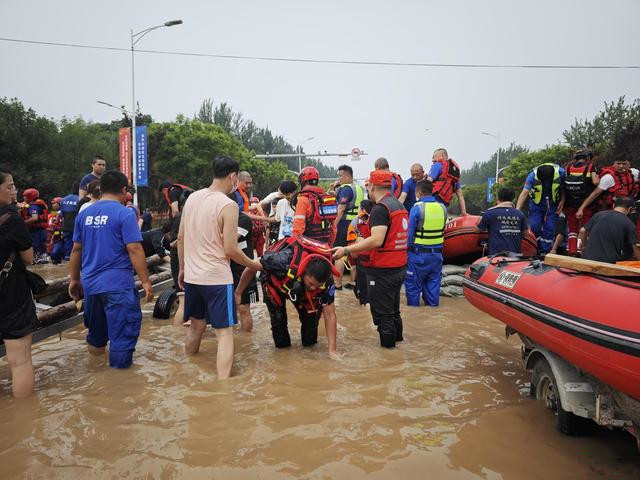


Inflatable Boats in Flood Rescue Operations: An Unyielding Lifeline in Hebei Province, China
Introduction:
During times of devastating floods, the ability to swiftly and safely navigate treacherous waters is paramount. In Hebei Province, China, inflatable boats emerged as invaluable tools in the flood rescue operations, providing a lifeline to stranded individuals and facilitating the evacuation of affected communities. These versatile and durable boats played a pivotal role in the heroic efforts of rescue teams and volunteers, enabling them to reach remote areas, navigate submerged streets, and save lives. This article explores the vital role played by inflatable boats in the flood rescue operations in Hebei Province, highlighting their unique features, the challenges faced, and the impact they made in mitigating the devastating effects of the floods.
The Importance of Inflatable Rescue Boats in Flood Rescues:
Inflatable boats, often made from durable materials such as PVC or Hypalon, have proven to be an indispensable asset in flood rescue operations worldwide. With their lightweight and buoyant design, these boats can maneuver through swift currents, shallow waters, and narrow spaces, allowing rescuers to reach individuals in areas inaccessible by larger vessels. In Hebei Province, where floodwaters rapidly submerged roads and buildings, inflatable boats played a vital role in reaching those trapped in their homes or stranded on rooftops.
The Versatility and Adaptability of rescue dinghy:
One of the key advantages of inflatable boats is their versatility and adaptability to various flood rescue scenarios. They can be quickly inflated and deployed, providing immediate access to affected areas. Inflatable boats come in various sizes and configurations, from small dinghies to larger rafts, accommodating different rescue strategies and the number of individuals to be evacuated.
Their shallow draft capability allows these boats to navigate through flooded streets, maneuvering around debris and submerged obstacles with relative ease. This attribute is particularly crucial in urban environments where conventional boats may struggle to access narrow alleyways or densely populated areas.
Additionally, the portability of inflatable boats enables rescuers to transport them to hard-to-reach locations. These boats can be conveniently stored in rescue vehicles, deployed from helicopters, or carried by hand to areas where larger vessels cannot reach. Their ability to be rapidly inflated and deflated provides flexibility, making them ideal for emergency situations when time is of the essence.
Overcoming Challenges in Flood Rescue Operations:
Flood rescue operations present numerous challenges, and inflatable boats have proven instrumental in overcoming these obstacles. Rescuers often face powerful currents, submerged hazards, and limited visibility, making the task of navigating treacherous waters incredibly challenging. However, inflatable boats are designed to withstand these conditions, ensuring the safety of both rescuers and survivors.
The stability and buoyancy of inflatable boats offer better control and maneuverability in strong currents, minimizing the risk of capsizing or losing control. The buoyant tubes surrounding the boat also provide additional flotation, allowing rescuers to safely traverse submerged areas without compromising their own safety.
Another significant challenge faced during flood rescues is the need to transport multiple individuals to safety simultaneously. Inflatable boats, with their capacity to accommodate several occupants, facilitate the swift evacuation of stranded individuals, reducing the likelihood of injuries or casualties. This becomes especially critical in situations demanding urgent medical attention or the rescue of vulnerable populations such as children, the elderly, or individuals with disabilities.
Furthermore, Zodiac inflatable rescue boats are often equipped with additional safety features. These may include grab lines, D-rings for secure attachment, sturdy oars or paddles, and reliable inflation valves. Such features enhance stability, ease of use, and the boats' ability to withstand rough conditions, enabling rescuers to focus on their mission and rescue efforts.
Collaboration Between Rescue Teams and Inflatable Boat Manufacturers :
The successful utilization of inflatable boats in flood rescue operations relies not only on the skills and bravery of the rescue teams but also on the collaborative efforts between these teams and inflatable boat manufacturers. Open communication channels and sharing of expertise allow manufacturers to design and develop inflatable boats that meet the specific requirements of flood rescue scenarios.
Through ongoing dialogue, manufacturers can continually refine their designs, making them more resilient, lightweight, and maneuverable. The input and feedback from rescue teams regarding the boats' performance and functionality in real-world situations are invaluable for enhancing their effectiveness.
Investment in Disaster Preparedness and Training:
While inflatable boats have proven their worth in flood rescue operations, it is crucial to acknowledge the need for continuous investment in disaster preparedness and training. Adequate resources should be allocated to ensure that rescue teams receive comprehensive training in operating inflatable boats in flood conditions. This training should cover techniques for navigating turbulent waters, rescuing individuals from different environments, and maintaining the boats' condition for prolonged use.
Conclusion:
The utilization of inflatable water resuce boats in flood rescue operations in Hebei Province, China, demonstrated their indispensable role in saving lives and facilitating evacuation efforts. Their versatility, adaptability, and durability proved instrumental in navigating treacherous floodwaters and accessing otherwise unreachable areas. In collaboration with rescue teams, inflatable boat manufacturers have been able to refine their designs continuously, ensuring that these boats meet the demanding requirements of flood rescue missions.
As natural disasters continue to pose significant challenges worldwide, it is crucial for governments and organizations to invest in disaster preparedness, including the procurement of reliable inflatable boats and comprehensive training programs for rescue teams. By doing so, communities will be better equipped to respond to flood emergencies, minimize casualties, and save lives. The unwavering commitment and heroic efforts of those involved in the flood rescue operations in Hebei Province highlight the vital role of inflatable boats as an unyielding lifeline in times of crisis.




 Qingdao Colton Yacht Co.,Ltd Factory address: Developed zone, Laixi District, Qingdao,China Office address: Baoli building,Jinshui road, Licang district, Qingdao,China
Qingdao Colton Yacht Co.,Ltd Factory address: Developed zone, Laixi District, Qingdao,China Office address: Baoli building,Jinshui road, Licang district, Qingdao,China +8615165275783
+8615165275783 sales@coltonyacht.com
sales@coltonyacht.com IPv6 network supported
IPv6 network supported


